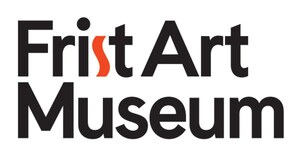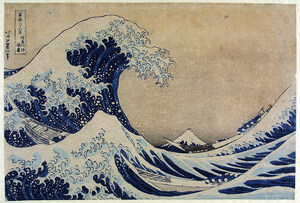NASHVILLE, Tenn., May 16, 2019 /PRNewswire/ -- The Frist Art Museum presents Monsters & Myths: Surrealism and War in the 1930s and 1940s, an exhibition that explores the powerful and unsettling images created in response to the threat of war and fascist rule. Featuring works by Luis Buñuel, Salvador Dalí, Max Ernst, René Magritte, Joan Miró, Pablo Picasso, Dorothea Tanning, and others, the exhibition will be on display in the Frist's Upper-Level Galleries from June 21 through September 29, 2019.
Through 78 objects, including paintings, drawings, film, and sculptures drawn primarily from the collections of The Baltimore Museum of Art and The Wadsworth Atheneum Museum of Art, Monsters & Myths highlights the brilliance and fertility of this period, which arose in response to Hitler's rise to power, the Spanish Civil War, and World War II—events that profoundly challenged the revolutionary hopes that had guided most Surrealist artists in the 1920s. "In this exhibition, Surrealists' portrayals of monsters, fragmented bodies, and other depictions of the grotesque are explored as metaphors for the threat of violence and fears and fantasies of unbridled power," says Frist Art Museum chief curator Mark Scala.
Since 1924, artists and writers associated with the Surrealist movement had aimed to deconstruct the social order, particularly through targeting oppressive traditions by embracing the irrational and the marvelous in pursuit of psychic liberation. "Seeking access to hidden truths, the artists in this show used their darkest imaginings to confront trauma," says Scala. "They employed the language of dreams, free association, and Freudian psychoanalytic theory to help transform both themselves and a society that seemed inescapably bound for fascism and war."
Through each artist, the psychological power of monstrosities appears in different guises in the exhibition. The first section, titled "The Emergence of Monsters," focuses on the symbolism of deformation, fragmentation, and hybridity to reflect the inhumanity of war as well as individual psychological torment. In this section, Picasso reintroduces the myth of the Minotaur, a symbol of the repressed forces of the unconscious. Hans Bellmer and André Masson merge violence and malevolent sexuality in images of dismemberment and mutilation. Headless bodies in works by Alberto Giacometti and Magritte symbolize the loss of reason.
The exhibition continues with the section titled "The Spanish Civil War," which includes paintings and prints by Dalí, Miró, and Picasso, among others, capturing their despair at the brutality of the fascists in their war with the republican government. Immediately following "The Spanish Civil War," the section "World War II" features works that portend the coming disasters and capture the emotional upheavals experienced by artists during the early years of the war. While these responses are marked by anxiety and distress, a surprising beauty can be seen in even the most horrific works, such as Wolfgang Paalen's painting of colorful bird-like demons in The Battle of Saturnian Princes III (1939).
The section "Dislocation and Survival" features extraordinary paintings by Surrealists, including Dalí, Ernst, Masson, and Roberto Matta who fled the war, mostly for the United States. Ernst's painting Europe After the Rain II (1940–42) spans the mutating structures and human wraiths of a post-apocalyptic Europe with the crystalline outcroppings of a desert landscape, inspired by Ernst's experience as an exile visiting Arizona. Like the other works in this section, Europe After the Rain II underscores transitions between past and present, reality and dream, and reason and irrationality that were acutely felt by these expatriate artists.
The exhibition concludes with "Surrealism in the Americas," showing the influence of exiled European artists like Masson and Ernst on Americans such as Jackson Pollock, Mark Rothko, and Tanning. Highlights include Tanning's phantasmagorical painting The Temptation of Saint Anthony. Also included in the exhibition is the film Un Chien Andalou (1929) by Buñuel and Dalí, which contains a network of narratives relating to anticlericalism, unfulfilled desire, memory, and death.
Exhibition Credit
This exhibition was organized by The Baltimore Museum of Art and The Wadsworth Atheneum Museum of Art.
This exhibition and related programs have been made possible in part by a major grant from the National Endowment for the Humanities.
Sponsor Acknowledgment
The Frist Art Museum gratefully acknowledges the generosity of our Picasso Circle members.
The Frist Art Museum is supported in part by the Metro Nashville Arts Commission, the Tennessee Arts Commission, and the National Endowment for the Arts.
Connect with us #FristSurrealism
About the Frist Art Museum
Accredited by the American Alliance of Museums, the Frist Art Museum is a 501(c)(3) nonprofit art exhibition center dedicated to presenting and originating high-quality exhibitions with related educational programs and community outreach activities. Located at 919 Broadway in downtown Nashville, Tenn., the Frist Art Museum offers the finest visual art from local, regional, national, and international sources in exhibitions that inspire people through art to look at their world in new ways. For additional information, call 615.244.3340 or visit FristArtMuseum.org.
SOURCE Frist Art Museum

Related Links
WANT YOUR COMPANY'S NEWS FEATURED ON PRNEWSWIRE.COM?
Newsrooms &
Influencers
Digital Media
Outlets
Journalists
Opted In






Share this article